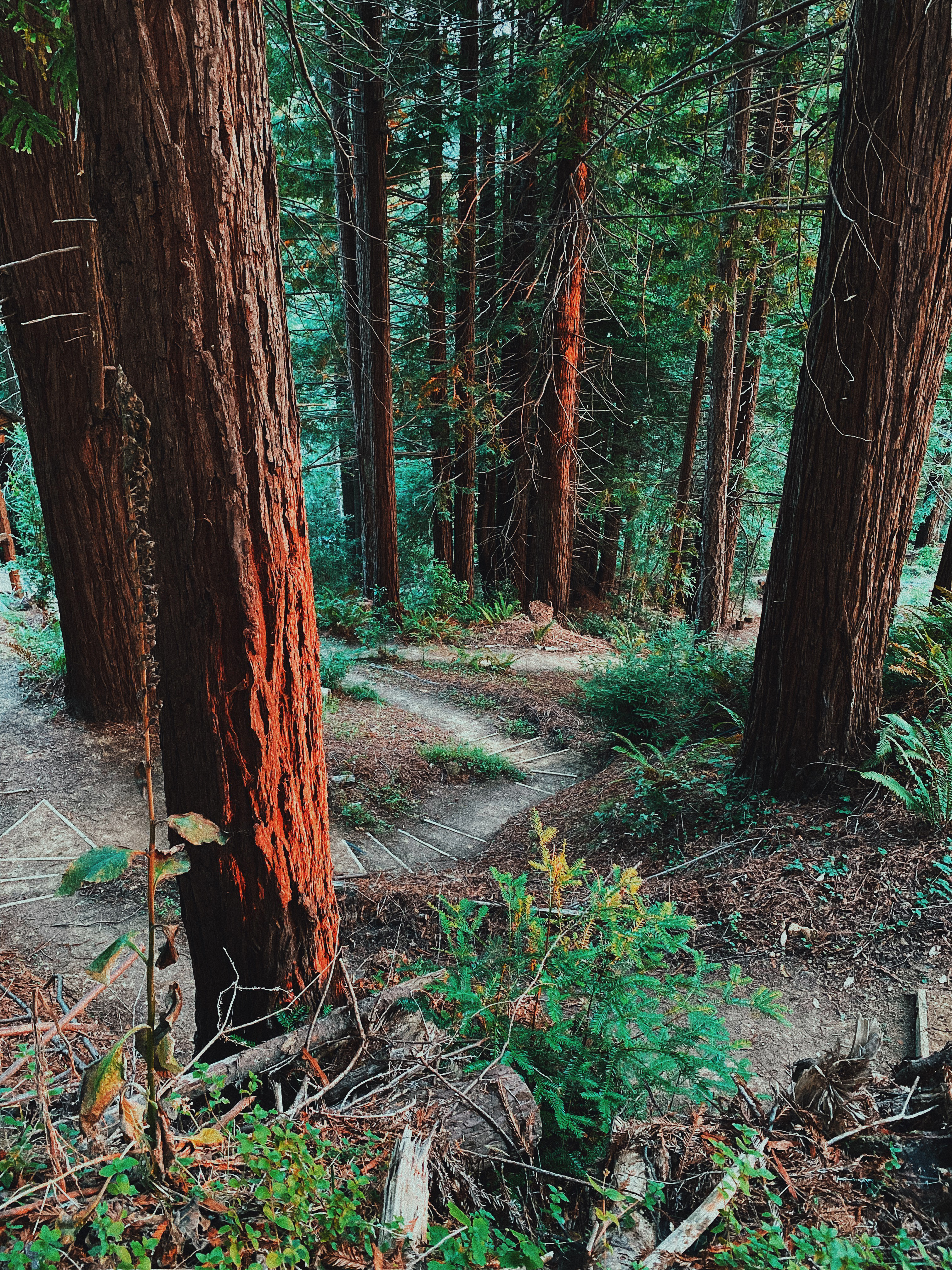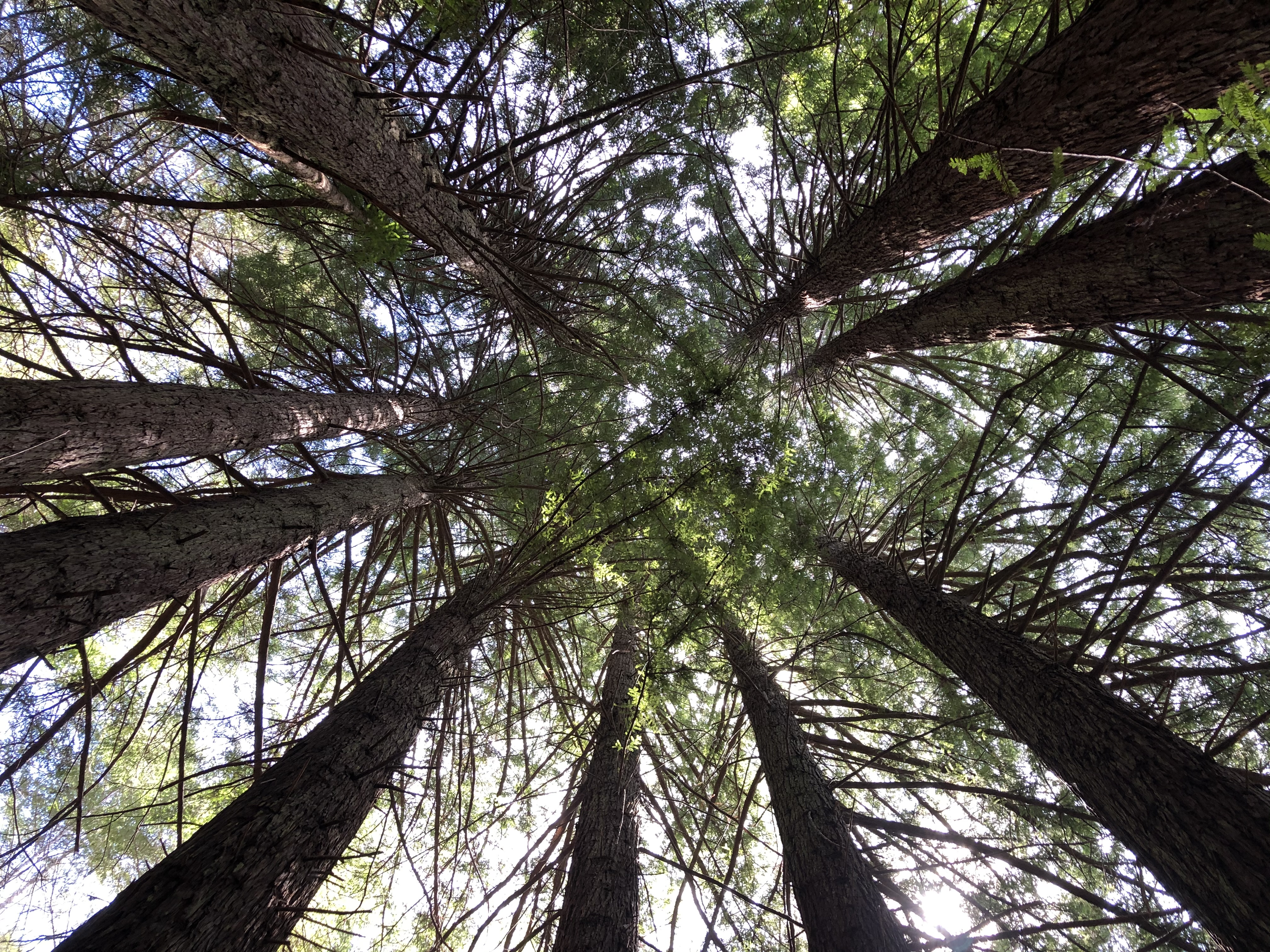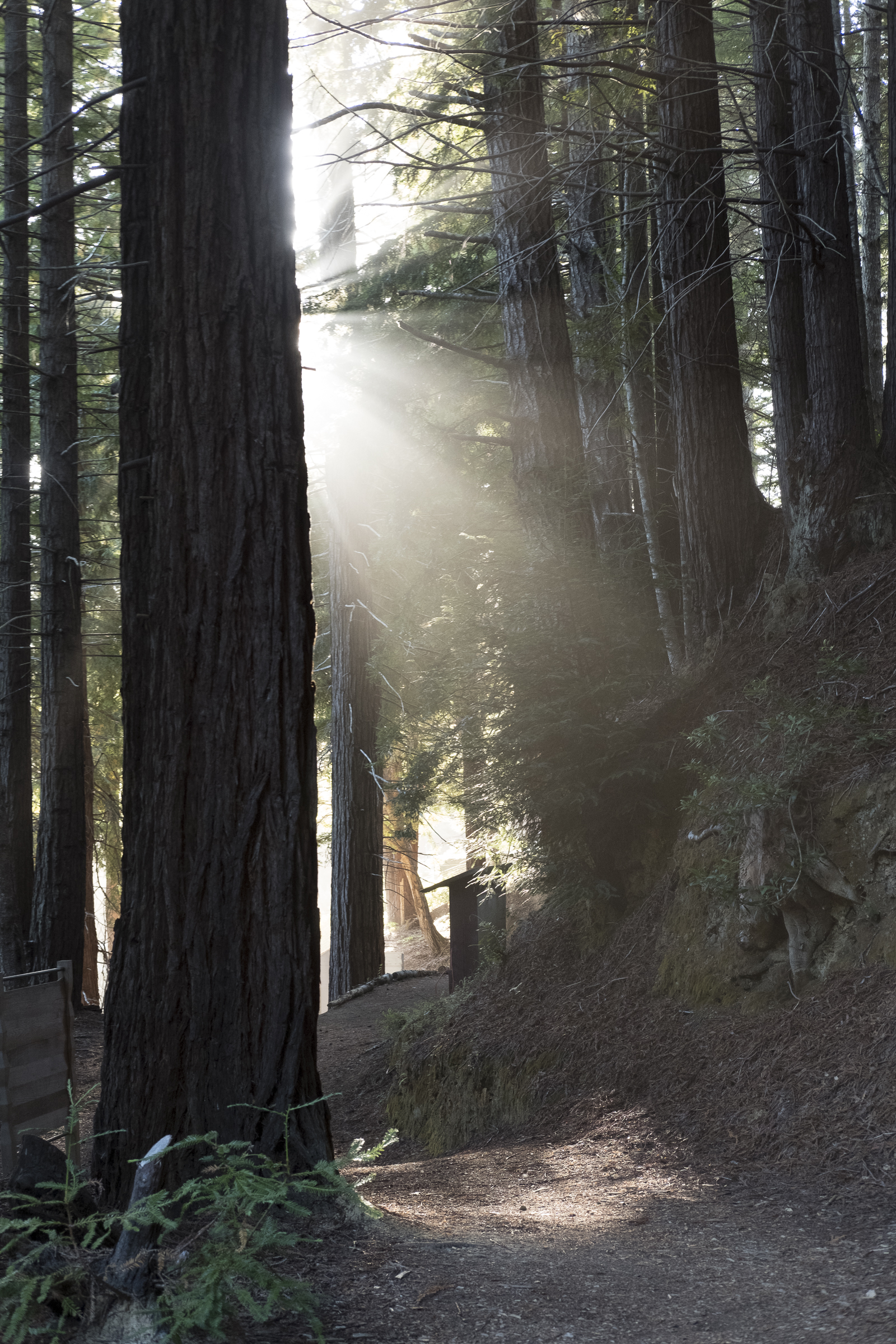The Coastal Redwoods
Coming to Salmon Creek Farm for the first time, city dwellers are often overwhelmed by the unique and mystical landscape. We lead visitors from the parking lot through front gates into sunny gardens and orchards followed by a second set of gates that dramatically deliver us into the shaded depths of the Redwoods. A wide, curving dirt logging road hugging a south-facing slope takes us into the big trees that loom above us and line our path ahead, stepping down the slope as far as the eye can see.The trees are impressive, but we need to be reminded that they are tragic and tiny shadows of the giants that grew here for eons. The first Coastal Redwood fossils date back more than 200 million years to the Jurassic period. These ancient trees — among the tallest and oldest lifeforms on earth — grew up to 380 feet tall and 30 feet across, living up to 2000 years.
The indigenous Pomo people make use of the companion plants of the Redwoods, but do not typically cut them down. They might use fallen trees to make planks for houses or hollowed-out logs for canoes. Before commercial logging and clearing began in the 1850s, Coastal Redwoods naturally occurred on around 2 million acres along a 450 mile coastal strip. Only 5 percent of the original old-growth forests remain today.



In the 1870’s, the land now known as Salmon Creek Farm was clearcut for lumber and burned for pasture. New growth sprouting up from the roots of the ancient Redwoods, along with their companion plants and Fir trees grew back until that forest was clearcut for more lumber, and burned once again from 1953 to 1963. Where massive trees were once spaced out around five to fifteen per acre, this new ‘un-natural’ post-industrial landscape of second- and third-growth forests would find thousands of trees per acre. This choked-out and over-grown landscape blocks sunlight to the forest floor, inhibits diversity of companion plants, and prevents any of the leggy, skinny trees from maturing to their full potential size.
We have been trying to heal these damaged woods, limbing up dead branches, thinning Fir trees, giving the most promising second- and third-growth redwood trees a chance to grow up strong, and making more space and light for the native plants that have evolved over millennia with these giants.